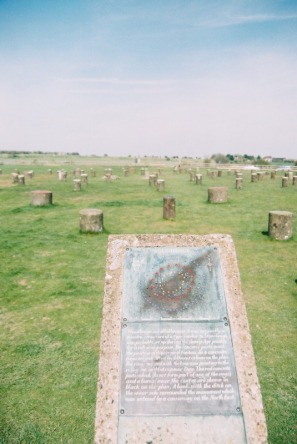A learning experience?
An archaeological site like Stonehenge lends itself to speculation and interpretation as to how and why it was built in various phases over thousands of years, and why it seems to have lost its importance.
English Heritage, who manage Stonehenge, have set up teacher and school resources on their website, which will help with the preparation of lessons as well as planning visits. The world heritage site states in its management plan from 2009, that 5% of all visits to Stonehenge are educational. But it also notes that 70% of all educational visitors come from overseas. To counter-act this, the management put a scheme in place in 2004, which helps local primary school children learn more about the stone circle. This scheme includes visits to the site and dressing up, as well as re-enactments. Many educational visits are free, to make the trip more appealing for teachers.
One of the management’s aims is to encourage research, including archaeological excavations at and around Stonehenge, and to promote it to improve the understanding of the prehistoric site and its value. Close to Stonehenge, at Durrington Walls, a Neolithic settlement and an Avenue leading to the river Avon were discovered in 2005. In 2008, a major research excavation was carried out at Stonehenge, to investigate the bluestones and their original position, as well as dating the double bluestone circle which was the first stone structure at the current site. No visible trace is left of the original circle nowadays, and the research was also aimed at dating the dismantling of the circle.
Day visitors to Stonehenge don’t get a clear learning experience, which can prove to be disappointing. There are no signs or panels at the monument explaining what it is the visitors see. On the one hand, this is good, as it does not obstruct the view or “gaze”; on the other hand, not every visitor will get an audio guide on busy days or visit as part of a guided group. So those without guides of some form will miss out. At Woodhenge, another prehistoric site 3 miles away, concrete pillars mark where the wooden structure that might have resembled Stonehenge once stood. However, even though it is small, there is one panel explaining the position of the holes and pillars, where the axis would have been, and what it might have been used for. Books are for sale in the Stonehenge gift shop which explain the heritage site very well, but there is nothing immediately at the site itself. Also, English Heritage is trying very hard to include resources and interaction on its website, such as background information, panorama views and interactive maps, but here again visitors will have to check up on it either before or after the trip.
English Heritage, who manage Stonehenge, have set up teacher and school resources on their website, which will help with the preparation of lessons as well as planning visits. The world heritage site states in its management plan from 2009, that 5% of all visits to Stonehenge are educational. But it also notes that 70% of all educational visitors come from overseas. To counter-act this, the management put a scheme in place in 2004, which helps local primary school children learn more about the stone circle. This scheme includes visits to the site and dressing up, as well as re-enactments. Many educational visits are free, to make the trip more appealing for teachers.
One of the management’s aims is to encourage research, including archaeological excavations at and around Stonehenge, and to promote it to improve the understanding of the prehistoric site and its value. Close to Stonehenge, at Durrington Walls, a Neolithic settlement and an Avenue leading to the river Avon were discovered in 2005. In 2008, a major research excavation was carried out at Stonehenge, to investigate the bluestones and their original position, as well as dating the double bluestone circle which was the first stone structure at the current site. No visible trace is left of the original circle nowadays, and the research was also aimed at dating the dismantling of the circle.
Day visitors to Stonehenge don’t get a clear learning experience, which can prove to be disappointing. There are no signs or panels at the monument explaining what it is the visitors see. On the one hand, this is good, as it does not obstruct the view or “gaze”; on the other hand, not every visitor will get an audio guide on busy days or visit as part of a guided group. So those without guides of some form will miss out. At Woodhenge, another prehistoric site 3 miles away, concrete pillars mark where the wooden structure that might have resembled Stonehenge once stood. However, even though it is small, there is one panel explaining the position of the holes and pillars, where the axis would have been, and what it might have been used for. Books are for sale in the Stonehenge gift shop which explain the heritage site very well, but there is nothing immediately at the site itself. Also, English Heritage is trying very hard to include resources and interaction on its website, such as background information, panorama views and interactive maps, but here again visitors will have to check up on it either before or after the trip.

